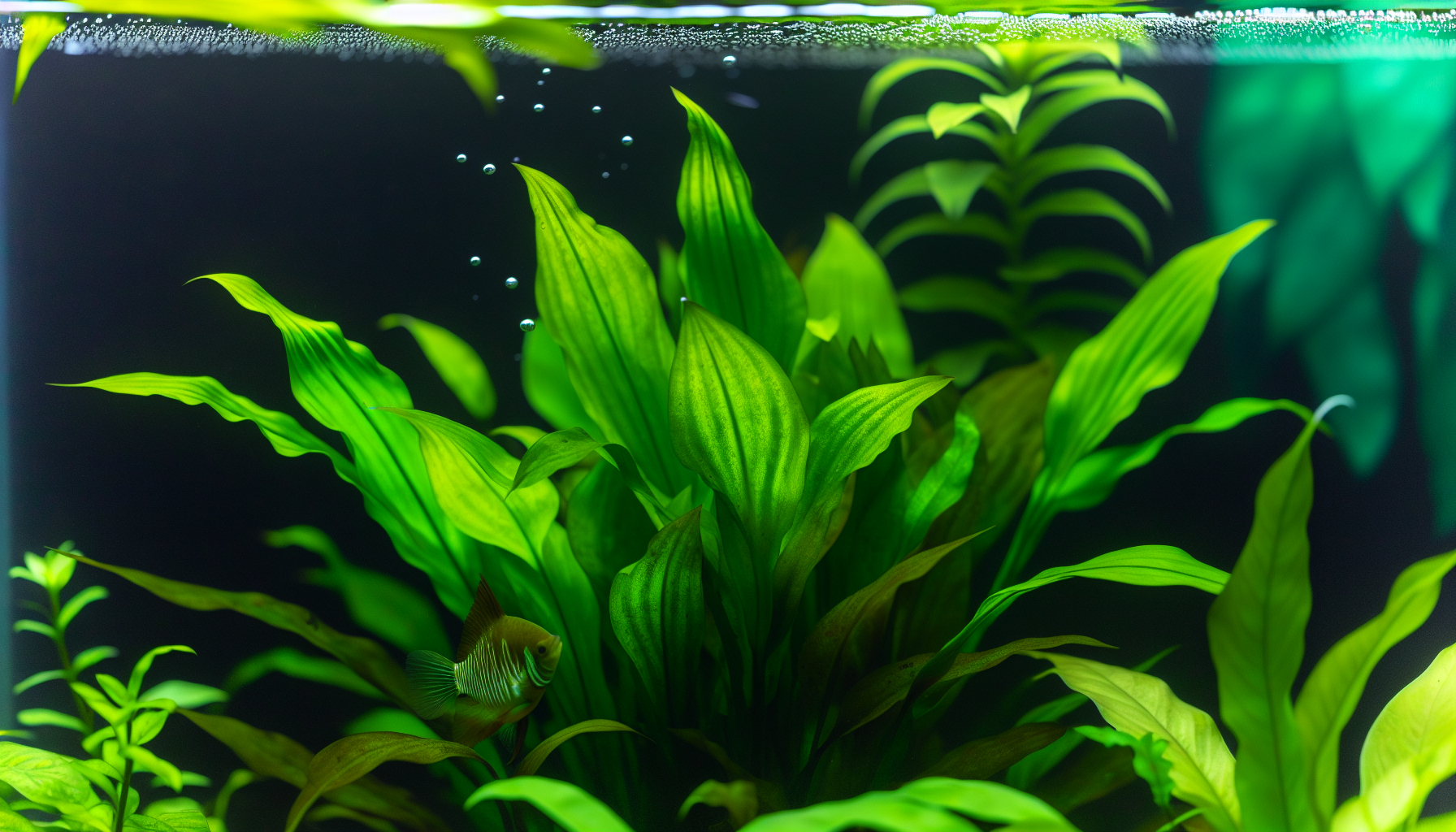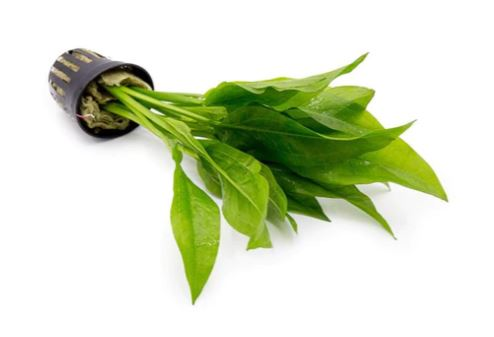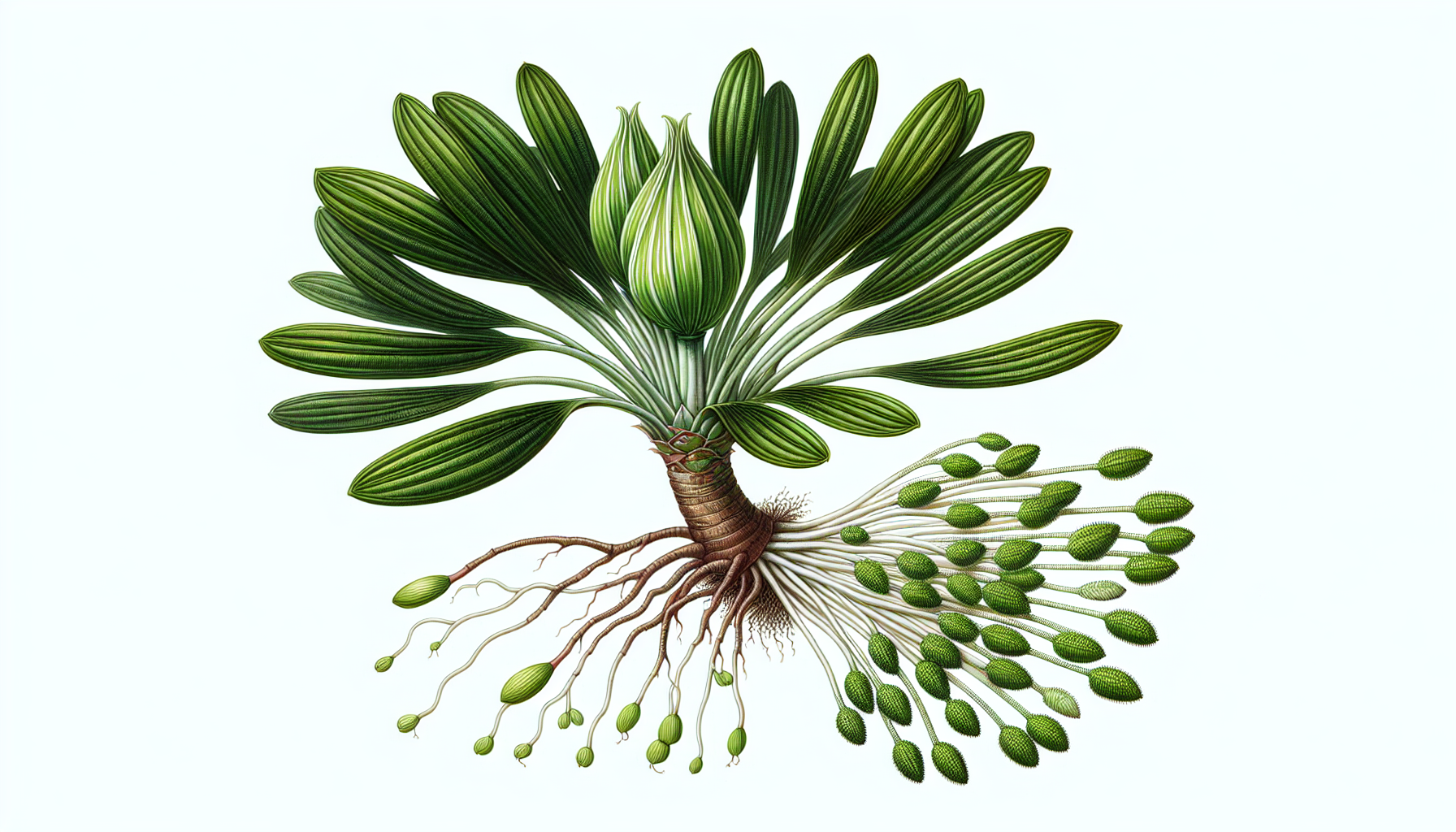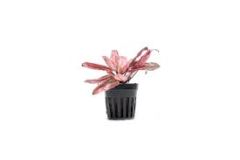Amazon Sword Plant: Ultimate Guide to Growing a Lush Planted Aquarium
Caring for an Amazon Sword plant is straightforward when you know the essentials. This guide lays out the key factors to grow and maintain these popular aquarium plants, ensuring they add beauty and vitality to your home aquascape.
Table of Contents
Key Takeaways
- The Amazon Sword Plant (Echinodorus Bleheri) is a popular aquatic plant for aquariums, valued for its aesthetic appeal and simplicity in care, with a typical growth size of 8-20 inches.
- Optimal growth for the Amazon Sword Plant requires careful attention to substrate quality, moderate to high light conditions (2.5-4 watts per gallon) with a 6000K-7000K color temperature, and stable water parameters with a temperature of 20-30°C (68-86°F), pH of 6.5-7.5, and hardness of 5-12 GH.
- Proper maintenance for the Amazon Sword Plant includes nutrient management with root tabs and optional CO2 supplementation, regular pruning for healthy growth, and it propagates through runners for easy multiplication of the plant in the aquarium. Root tabs are important as these plants are heavy root feeders.
Discovering the Amazon Sword Plant

The Amazon Sword Plant, an amphibious plant scientifically known as Echinodorus Bleheri, calls the South American waters home. This aquatic plant captivates aquarium enthusiasts with its striking appearance:
- Large, elongated leaves over 5 cm
- Dark to bright green in color
- Prominent veins and a slightly wavy appearance
- All forming a rosette shape
What makes the Amazon Sword Plant a favorite among popular aquarium plants is not just its visual appeal but also its simple care requirements. It’s a plant that not only survives but thrives in a well-maintained aquarium. Typically, it grows to a size of 8-11 inches but under optimal conditions can reach heights of up to 20 inches.
The Ideal Setup for Your Amazon Swords
A few key considerations come into play when creating an optimal environment for your Amazon Swords. You’ll need to think about the substrate, the lighting, and the water parameters. Each of these factors plays a crucial role in the growth and health of your Amazon Swords.
Substrate Secrets
Being heavy root feeders, Amazon Swords primarily extract nutrients from the substrate via their roots. That’s why choosing a nutrient-rich substrate is so critical for their growth and stability.
You might be wondering, what happens if the substrate isn’t nutrient-dense? Well, without it, Amazon Swords would require root tabs or solid fertilizers. Hence, planting Amazon Swords directly into a nutrient-rich substrate significantly aids their growth. We recommend Substrate like Controsoil from UNS
Lighting the Way

When it comes to lighting, Amazon Swords are quite versatile. They do best in moderate lighting but have a remarkable capacity to adapt to both lower and higher light levels. However, it is advisable to provide a consistent daily cycle of 8 to 12 hours of direct light, with successful toleration of up to 14 hours.
As for the type of light, full spectrum LED, fluorescent, and incandescent lights with an output ranging from 2.5 to 4 watts per gallon are well-suited for the Amazon Sword. To further enhance their lush vibrancy, aim for a light color temperature between 6000K to 7000K, which resembles natural daylight.
LED Lighting is also very popular. We recommend Aquarium Co-Op Easy Plant LED Light
Perfect Parameters
Water parameters also play a significant role in maintaining your Amazon Swords. These plants prefer a temperature range of 20-30°C (68-86°F), mirroring conditions found in their natural tropical habitat. Staying in the 72-78 range is ideal.
As for the pH, Amazon Sword plants are quite adaptable. The ideal pH range for these plants is between 6.5 and 7.5, but they can tolerate a pH range of 6.0 to 8.0. In terms of water hardness, Amazon Sword plants are comfortable in both hard and soft water conditions, with an optimal hardness of 5 – 12 GH (General Hardness).
Maintaining a stable environment and regularly monitoring water parameters are key to ensuring your Amazon Swords flourish. Rather than trying to have perfect parameters, aim for stable parameters!
Planting Your Amazon Sword: A Step-by-Step Guide

Having covered the basics, we can now proceed to discuss the actual planting process. First, dig a hole in the substrate for the Amazon Sword’s roots using your fingers or planting tweezers. Make sure to cover the roots while leaving the rhizome or crown exposed.
Choose a location in the midground or background of your aquarium. Remember, Amazon Swords can grow quite tall, so they need ample space for leaf spread. After planting and adjusting the plant’s position, conduct a water change. This will reduce debris and maintain clarity in the aquarium water.
Maintenance and Care for Long-Lasting Health
The good news is, the easy-care nature of Amazon Sword plants makes them an ideal choice for both beginners and seasoned hobbyists. But even though they’re relatively low-maintenance, there are still a few care tips to keep in mind to ensure your Amazon Swords thrive and live a long, healthy life.
Nutrient Management

As mentioned earlier, Amazon Swords are predominantly root feeders. This means they require root tabs that provide essential nutrients like iron, nitrogen, and potassium. Root tabs should be placed near the roots during initial planting, and added later on to supplement a depleted nutrient-rich substrate or when using inert substrate.
In addition to root tabs, CO2 supplementation can be beneficial for Amazon Swords. Although it’s not essential, it can enhance their growth rate and leaf coloration. This optional step could positively impact the overall health and appearance of the plants. Liquid fertilizers provide nutrients to the water column and complement root tabs. They can also help prevent iron deficiencies that can lead to yellowing leaves. If you notice brown leaf tips and veins, it could be a sign of magnesium deficiency, which can be corrected through targeted supplementation.
Pruning Practices
Consistent pruning helps foster new leaf growth and preserve the decorative value of your Amazon Sword plants. It also helps prevent disease by removing old or dying leaves. So how exactly should you prune your plants? Start with the oldest, outermost dark green leaves, cutting them as close to the root system as possible.
Yellow or brown leaves should also be removed as they are less efficient, and their removal allows the plant to focus on growing healthy new foliage. However, avoid over-trimming in a single session as it can temporarily shock the plant. Instead, prefer to remove leaves gradually to reduce stress.
Propagation Perfection with Amazon Sword Plants

Seeing your plants multiply is one of the rewarding aspects of being an aquarist. Amazon Sword Plants propagate primarily by sending out runners which then develop into baby plants. To propagate new plants, wait until the runner has produced small plants with fully formed roots.
Once the baby plants have developed roots, they can be cut from the parent runner. Their roots should be trimmed before replanting to encourage further growth. Replanted baby Amazon Sword plants should be placed with the crown and a small portion of the roots exposed within the substrate.
You can also trim and replant adventitious shoots from Amazon Sword Plants to manage the overall size of the plant.
Troubleshooting Common Issues with Amazon Sword Plants
Even with their robust nature, Amazon Sword plants can sometimes face issues. One common issue is yellowing leaves. This can be caused by the natural process of old emersed growth dying off after the plant has been transitioned to submerged growth in an aquarium.
Before planting the Amazon Sword, make sure to:
- Remove any decaying roots to prevent possible water quality issues
- Be careful not to over-fertilize as it can cause algal blooms, which can compete with Amazon Sword plants for nutrients
- If you notice yellowing leaves, carbon dioxide injection can be used to revive them, but caution is advised to prevent the CO2 levels from becoming harmful to fish.
Amazon Sword Plant Companions
Much like us, Amazon Sword plants thrive in good company. A variety of peaceful fish species such as:
- Rummy-Nose Tetra
- Siamese Algae Eater
- Congo Tetra
- Leopard Bush Fish
- Sunset Variatus Platy
- Rosy Barb
- Smaller species of Corydoras Catfish
can coexist with Amazon Swords. Invertebrate companions like Cherry Shrimp are also ideal, assisting with algae control and adding vibrant colors to the aquascape.
As for plant companions, the following plants offer different textures, colors, and shapes that complement the Amazon Swords:
- Java Fern
- Anubias species
- Cryptocoryne species
- Vallisneria
- Water Wisteria
- Hornwort
Implementing a tiered planting approach with Amazon Swords as the background plant, complemented by midground and foreground plants, creates a well-structured and appealing aquascape, serving as a great focal point.
Enhancing Your Aquarium with Amazon Swords
Enhancing the visual appeal of an aquarium is one of the many perks of Amazon Sword plants, which are a popular choice among aquarium plants. When planted alone, an Amazon Sword Plant can serve as an eye-catching centerpiece, especially in a smaller tank or against a darker background.
For large aquariums, grouping several Amazon Swords together in the background can mimic a thick green forest, offering a dramatic backdrop. However, if you’re working with smaller tanks, you’ll need to trim the Amazon Sword carefully to prevent it from taking over the space. In both cases, whether you have large aquariums or smaller tanks, proper care and maintenance of your Amazon Swords is essential for a thriving aquatic environment.
Another great tip is to strategically place Amazon Sword Plants, a popular choice among aquatic plants, to cleverly hide equipment like heaters and filter intakes, contributing to a natural-looking aquatic environment.
Fast Shipping and Quality Assurance
Are you prepared to introduce Amazon Sword plants into your aquarium? Rest assured, many retailers offer expedited shipping options and provide a Live Arrival Guarantee to ensure that your plants arrive quickly and in a viable state.
Ensure the validity of the Live Arrival Guarantee by providing accurate shipping information and reporting any delivery issues within 24 hours, along with clear photos of the unopened, damaged product. Retailers typically ship Amazon Sword Plants with moisture-retaining materials or water, using insulated packaging and often including temperature-control elements like heat or cold packs to maintain quality throughout delivery.
Bear in mind, however, that the guarantee only covers the plants being alive upon arrival and does not cater to issues associated with the aquarium’s ecosystem or post-arrival care.
Summary
In conclusion, Amazon Sword plants are a fantastic addition to any aquarium. Their lush, vibrant leaves bring a touch of the tropics to your living room, and their easy care requirements make them a popular choice among both novice and experienced aquarists.
From understanding the ideal setup for your Amazon Swords, to planting and maintenance, propagation, and troubleshooting common issues, we hope this guide has provided you with a comprehensive understanding of how to care for these impressive aquatic plants. Now it’s your turn to embark on this exciting journey and bring a slice of the Amazon rainforest into your home.
Frequently Asked Questions
Yes, Amazon sword plants need to be planted in the substrate of the aquarium, preferably in the midground or background to avoid blocking the view of other plants. Dig a hole in the substrate and bury the roots of the sword plant.
Yes, an Amazon Sword Plant can grow in gravel, but it's recommended to use loosely packed plant substrate for better growth due to its extensive root system.
Yes, Amazon sword plants will spread by forming new small plants on long runners, which will eventually develop their own roots. This allows the plant to reproduce and populate the aquarium.
To prune Amazon Sword plants, focus on cutting the oldest, outermost dark green leaves close to the root system, while avoiding over-trimming in a single session to prevent temporary shock to the plant. Happy gardening!
Amazon Sword plants propagate by sending out runners that develop into baby plants, which can be cut from the parent runner and replanted to grow new plants. So, you can propagate Amazon Sword plants by separating the baby plants from the parent runner and replanting them.



 Shrimp
Shrimp Fish
Fish Crab &
Crab & Plants
Plants Foods
Foods Snails
Snails